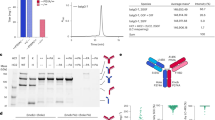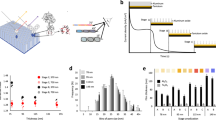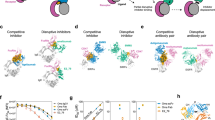Abstract
IT is well known that an increased vascular permeability produced by various agents can be visualized by the leakage of intravenously administered dye through the affected vessels. The vascularity and high histamine and serotonin content of mouse ears1 suggested that these organs might be useful in the visualization of in vivo antigen–antibody reactions. While investigating the ability of intravenously administered pollen extracts to induce blueing of the ears of mice2, Kind et al. also found that mice sensitized with bovine serum albumin (BSA) developed blueing of the ears when later challenged intravenously with BSA and Evans blue dye. When blueing of the ears was produced in normal mice by the intravenous injection of BSA, rabbit anti-BSA and dye, no latent period was found to be necessary for the ‘fixation’ of antigen or antibody3. Indeed, in mice, maximal incidence of anaphylaxis with rabbit antibody can be obtained by injecting antibody and antigen intravenously in rapid succession4. The apparent absence of a requirement for tissue fixation in mice suggested that blueing of the ears in anaphylactic mice might be useful for detecting such proteins as normal human IgA or myeloma IgA, which will not sensitize guinea-pig skin for reverse passive cutaneous anaphylaxis probably because of the lack of fixation sites on such molecules5.
Similar content being viewed by others
Article PDF
References
West, G. B., Int. Arch. Allergy, 13, 336 (1958).
Kind, L. S., Richards, W., Smith, A. T., and Ellman, P., Nature, 203, 1390 (1964).
Kind, L. S., (unpublished observations).
Munoz, J., Schuchardt, L. F., and Verwey, W. F., J. Immunol., 80, 77 (1958).
Franklin, E. C., and Ovary, Z., Immunology, 6, 434 (1963).
Cohen, S., and Porter, R. R., Adv. Immunol., 4, 287 (1964).
Allansmith, M., and Buell, D. N., J. Allergy, 35, 339 (1964).
Ovary, Z., Fudenberg, H., and Kunkel, H. G., J. Exp. Med., 112, 953 (1960).
Author information
Authors and Affiliations
Rights and permissions
About this article
Cite this article
KIND, L. Sensitization of Mice with Human IgA. Nature 209, 926 (1966). https://doi.org/10.1038/209926a0
Issue date:
DOI: https://doi.org/10.1038/209926a0



